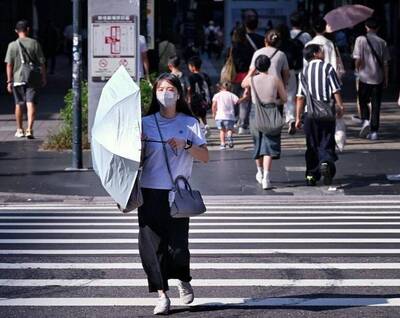The household income gap widened last year, with the average annual disposable incomes of the richest families reaching 6.05 times those of the poorest, results of the latest survey released on Thursday showed.
The trend marked a reversal from 2007, when the income gap between the richest and poorest 20 percent of local families narrowed slightly to a factor of 5.98 from 6.01 recorded in 2006, an official from the Cabinet-level Directorate General of Budget, Accounting and Statistics (DGBAS) said.
Moreover, the official said, if social welfare subsidies and tax benefits were excluded, the income gap between the two groups would have hit an all-time high of a factor of 7.73 for last year.
The DGBAS has conducted an annual survey of family incomes and expenditures since 1964 to keep tabs on wealth distribution.
The survey divides families into five brackets in terms of annual disposable income, with the top 20 percent defined as the richest and the bottom 20 percent as the poorest. The largest income gap between these two brackets was 6.39-fold, recorded in 2001.
But if social welfare subsidies and tax benefits were excluded, the wealth gap in 2001 was 7.67 fold, lower than that recorded last year.
The latest survey found that the average annual disposable income in the richest group of families reached NT$1.84 million (US$55,700) last year, compared with NT$304,000 for those in the poorest bracket.
With government welfare subsidies and tax breaks excluded, the annual disposable family income of the richest group amounted to NT$1.9 million, compared with the poorest group’s NT$245,000.
The DGBAS official attributed the widening wealth gap in part to structural changes in the job market as a result of economic globalization.
As to whether the global financial crisis had any impact on local wealth distribution, the official said a further survey and study would be needed to find out.

Foreign travelers entering Taiwan on a short layover via Taiwan Taoyuan International Airport are receiving NT$600 gift vouchers from yesterday, the Tourism Administration said, adding that it hopes the incentive would boost tourism consumption at the airport. The program, which allows travelers holding non-Taiwan passports who enter the country during a layover of up to 24 hours to claim a voucher, aims to promote attractions at the airport, the agency said in a statement on Friday. To participate, travelers must sign up on the campaign Web site, the agency said. They can then present their passport and boarding pass for their connecting international

Three Taiwanese airlines have prohibited passengers from packing Bluetooth earbuds and their charger cases in checked luggage. EVA Air and Uni Air said that Bluetooth earbuds and charger cases are categorized as portable electronic devices, which should be switched off if they are placed in checked luggage based on international aviation safety regulations. They must not be in standby or sleep mode. However, as charging would continue when earbuds are placed in the charger cases, which would contravene international aviation regulations, their cases must be carried as hand luggage, they said. Tigerair Taiwan said that earbud charger cases are equipped

Temperatures in northern Taiwan are forecast to reach as high as 30°C today, as an ongoing northeasterly seasonal wind system weakens, the Central Weather Administration (CWA) said. CWA forecaster Tseng Chao-cheng (曾昭誠) said yesterday that with the seasonal wind system weakening, warmer easterly winds would boost the temperature today. Daytime temperatures in northern Taiwan and Yilan County are expected to range from 28°C to 30°C today, up about 3°C from yesterday, Tseng said. According to the CWA, temperature highs in central and southern Taiwan could stay stable. However, the weather is expected to turn cooler starting tonight as the northeasterly wind system strengthens again

Taiwan sweltered through its hottest October on record, the Central Weather Administration (CWA) said yesterday, the latest in a string of global temperature records. The main island endured its highest average temperature since 1950, CWA forecaster Liu Pei-teng said. Temperatures the world over have soared in recent years as human-induced climate change contributes to ever more erratic weather patterns. Taiwan’s average temperature was 27.381°C as of Thursday, Liu said. Liu said the average could slip 0.1°C by the end of yesterday, but it would still be higher than the previous record of 27.009°C in 2016. "The temperature only started lowering around Oct. 18 or 19